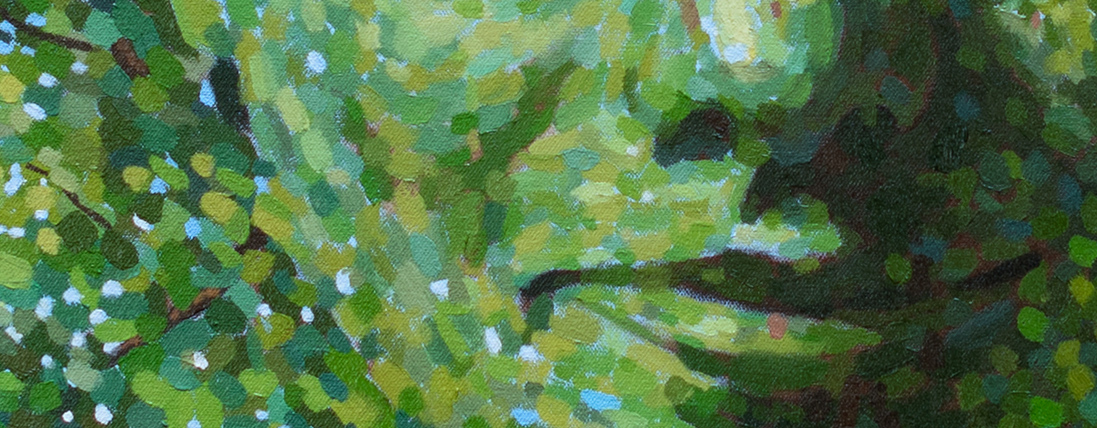
To build satisfaction from the ground up

A few of weeks ago, I was sitting with my family in our backyard. We made a fire in our charcoal grill with leftover wood from a tree chopped up years ago. There were no screens, no junk food, no pressure and no concerns. Each of us could have found things to worry about in that moment. Yet, we sat there, admiring the beauty of the red flames and feeling their heat on our bodies. For a couple of hours, we allowed ourselves to be satisfied.
The Merriam-Webster dictionary defines satisfaction in three ways:
- the fulfillment of a need or want
- the quality or state of being satisfied
- a source or means of enjoyment
The first definition, as opposed to the other two, is not a straightforward path to happiness. A fulfilled desire only sets the stage for the next one. The unsatisfied mind postpones feelings of happiness to predetermined outcomes. Most people spend their lives running after goals they don’t achieve only to feel dissatisfied or achieving their goals only to realize the satisfaction fades in a matter of hours.
“There are only two tragedies in life: one is not getting what one wants, and the other is getting it.” — Oscar Wilde
Lasting satisfaction is generated from within instead of being lusted after from the outside. With the right tools, one can nurture enjoyment from the simplest things. A trained mind can easily puncture ordinary existence with shots of satisfaction. Here are the three best tools to generate daily happiness for free:
1. Sharpen your focus
“Each of us is looking for a path back to the present: We are trying to find good enough reasons to be satisfied now. […] Every moment of the day — indeed, every moment throughout one’s life — offers an opportunity to be relaxed and responsive or to suffer unnecessarily.”
― Sam Harris, Waking Up: A Guide to Spirituality Without Religion, 2014.
Every day, we overlook dozens of satisfying events simply because they became routine. We remain on the surface layer of habits, forgetting the wealth beneath. Our brains stop paying attention to them in favor of thoughts about the past and the future. Yet, every “usual” activity can become a source of happiness if we focus on it. Here are some examples:
Morning tea/coffee
Most of us drink some kind of hot caffeinated beverage in the morning. We need it for a boost of alertness. Yet, with deliberate focus, the experience can go deeper .
Start by noticing the smell of the leaves, the beans or the ground. Notice their texture. Take in the smell as you infuse the beverage. Close your eyes and take a sip. Is it bitter? sweet? saturated? watery? High quality teas leaves, coffee beans and cocoa have complex flavors.
Don’t let your thoughts jump to something else. Don’t glance at your phone. Stay with the experience for a minute or two. There! On top of energy and antioxidants, you also got a boost of satisfaction.
Focusing fully on the experience might inspire you to learn more about these plants. Try new flavors. Try different brewing methods. Before you know it, your mornings will become multilayered and engaging.
Commute to school/work
Some people walk, some people cycle, some people drive and some people take public transit. Every day, we pass hundreds of fascinating objects and beings on our ways without even noticing.
If you’re driving, focus on the road (obviously). If you’re cycling, also focus on the road but take a moment to feel your body in motion.
If you’re taking public transit, observe the landscape zooming by. Notice the people around you. What are they thinking? How are they feeling? What is their resting posture? I enjoyed many such observations while sketching in buses and trains.
If like me you’re lucky enough to walk to work, go out a bit earlier. Walk slower, examine the patterns of bricks on walls, the stubborn dandelions growing out of cracks in the cement and the uniqueness of every tree on your way.
Finally, if you work from home — since that became common this year — be grateful for such a short commute. Organize your workplace. Create a clean harmony around you. Notice the easygoing quality of working without a dress code. Feel the satisfaction of not having that annoying colleague next to you or a nosy manager looking over your shoulder.
Eating
Whether it’s breakfast, lunch or supper; most people have stopped tasting their food. They cram in processed calories out of habit, ignorance and anxiety. It’s hard to appreciate the taste of a turnip when you’re high on doughnuts and fries.
Take a moment to taste what you’re eating. Don’t talk. Don’t look at a screen. Close your eyes. Feel the food as you chew it. Try to notice the different flavors and textures. Pay attention to how your stomach reacts. After eating, do you feel sharp or bloated? If it’s the latter, it’s time to reevaluate your diet.
Also, examine the feeling of hunger as it arises. Don’t label it as “bad”; it isn’t. Let it linger for a while. The hungrier you are, the better your upcoming meal will taste.
2. Embrace discomfort
“Pain unlocks a secret doorway in the mind, one that leads to both peak performance, and beautiful silence.”
― David Goggins, Can’t Hurt Me: Master Your Mind and Defy the Odds, 2018.
Water is never more welcome than after a half-hour run in the hills. A wooden floor never feels more comfortable than after a grueling workout. An apple is never more flavorful than after a multiple-day fast.
Life is a matter of contrast. When we’re too comfortable, we look for more intense sources of pleasure to get to baseline and we’re bothered by trivial problems. When we put ourselves through voluntary discomfort, we rediscover our basic amenities.
I feel a surge of gratitude for flat ground after running ten minutes uphill. I meld with my food after a 24-hour fast. I experience the best moments with my friends when we turn off our phones and dive into disturbing humor.
Learning to be comfortable with discomfort removes the discomfort of feeling too comfortable.
3. Use negative visualization
“Negative visualization, in other words, teaches us to embrace whatever life we happen to be living and to extract every bit of delight we can from it.” — William B. Irvine, A Guide to the Good Life: The Ancient Art of Stoic Joy, 2008.
Taking things for granted is a significant source of dissatisfaction. In a matter of days, any positive event can jump from the “wow this is awesome!” to the “taken for granted” category. Psychologists call it : the hedonic treadmill. Whatever our sources of pleasure are, we get used to them and we yearn for more.
The Stoic philosophers of ancient Rome developed a technique to step off that treadmill : negative visualization. It consists in taking moments throughout the day to imagine losing what you already have.
Imagine losing your bed and having to sleep on the floor. Imagine not having electricity. Imagine waking up to discover all your shoes have vanished. Imagine having no access to a bathroom. The applications of negative visualization are endless.
By conceiving the loss of the simplest things in your life, you will feel happy to have them.
In short, to improve your life satisfaction : focus on what you’re doing, welcome some discomfort and imagine losing what you have. Your mind will generate satisfaction from within instead of yearning to get it from the outside.
As Sam Harris wrote in Waking Up: “Every experience you have ever had has been shaped by your mind. Every relationship is as good or as bad as it is because of the minds involved. If you are perpetually angry, depressed, confused, and unloving, or your attention is elsewhere, it won’t matter how successful you become or who is in your life — you won’t enjoy any of it.”



